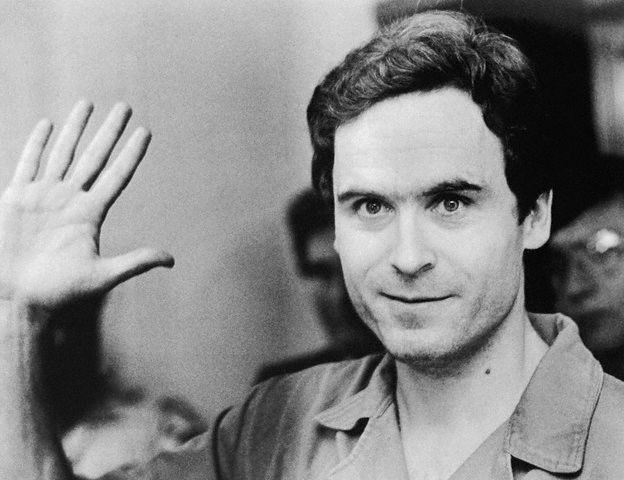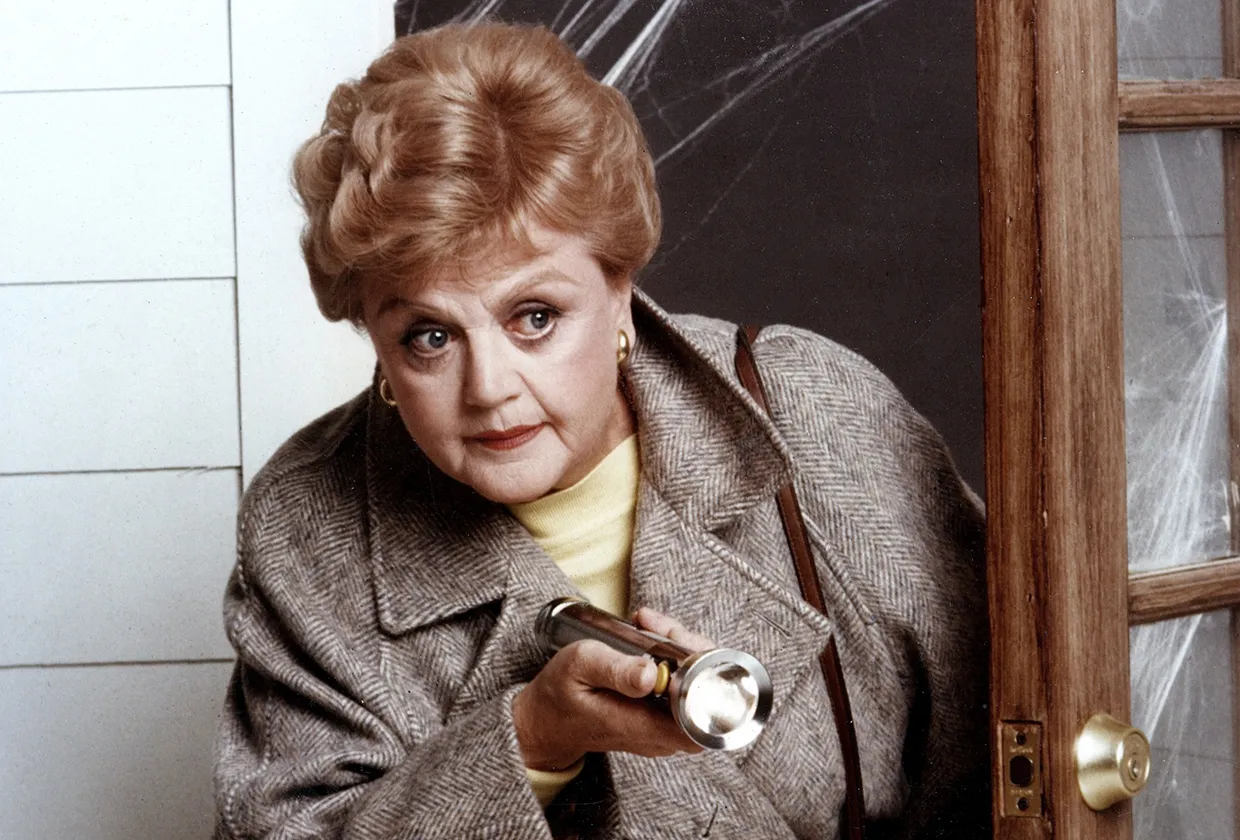essays
Serial Killer Ted Bundy’s Deadly Charm
"Star Power," an essay by Fariha Roísín

Serial Killer Ted Bundy’s Deadly Charm
Star Power
Google Ted Bundy, and there’s this one photo, no larger than a thumbnail — it’s black and white and the ink has faded and bled, congealing at certain sides of his exaggerated face. He has the smile of a clown, John Wayne Gacy, but creepier. He looks into the barrel of camera, soaking in insouciance, smirking at the way he’s wielded our hearts — we’re writhing, but he’s still, calm to the last moment. In the picture he’s only half smiling — a certain Bundian quirk — at the mass of viewers that are destined to fall into his charms via the internet and TV, comme moi.
His face has a hollowness. He knows his appeal. He’s handsome in a jarring way, meaning he’s not really that good looking. I have never seen something as terrifying as that photo of Ted Bundy.
It’s so easy to call serial killers pure evil. Bundy’s defense attorney, John Henry Browne, said several years after the case: “Ted knew he was evil. Evil, evil, evil. And, believe me, really evil.” It seems almost comical. Evil? When he committed his crimes, Bundy always dressed as a man who needed help, wounded by circumstance. A man in crutches. A man with a broken leg in a cast. A man with an arm in a sling. A man with a past who needed to be saved. The lure is the best part: gaining the trust of a flustered woman, a woman who looks at you and feels desire and pity. Ted Bundy was an actor.
Performers are interestingly very commonly Sagittarians. Supposedly it’s because they house a certain desire for attention seeking and risk taking. A serial killer, an actor, willing to kill for the part. With a swashbuckling bravado, the Sagittarius Ted Bundy had a penchant for performance and for turning lips to blue as he raped and strangled to death upwards of thirty women. Since his execution in 1989, however, Browne has suggested that it may even be close to one hundred men and women. That is what Bundy supposedly told him, just before his death, but Browne hates to revisit those memories. To him, they’re “creepy.”
Ted is the Hollywood bad boy of serial killers, a rebel without a cause. Before he died he said: “I’m as cold a motherfucker as you’ve ever put your fucking eyes on.”
•
Maybe it was audacious luck, or maybe it was written in the stars.
In his 42 years Bundy worked at many minimum wage service jobs, at a Safeway store, and he volunteered at the Seattle office of Nelson Rockefeller’s presidential campaign. He worked on the re-election committee for Republican Governor Daniel J. Evans and in 1973, despite mediocre Law School Admission Test scores, Bundy was accepted into the law school of University of Utah due to recommendations from Evans and several University of Washington psychology professors. Yes, psychology professors.
In 1971 he took a job at Seattle’s Suicide Hotline crisis center where he met Ann Rule, a former Seattle Police Officer. She described him as “kind, solicitous, and empathetic.” In 1980, she wrote a book about him titled The Stranger Beside Me, in which she says of their relationship, “I was just in the right place at the right time” — words no other woman in the history of Ted Bundy’s life ever uttered. Ted. Friend. Confidant. Student. Son. Fiance. Volunteer. Father. Aspiring lawyer. Aspiring politician. Liar. Psychopath. Chauvinist. Rapist. Serial killer. Necrophiliac. Con-artist.
When they finally arrested him for failing to pull over for a routine traffic stop, they found props in the trunk — a ski mask, a second mask made from pantyhose, a crowbar, handcuffs, trash bags, a coil of rope and an ice pick. The front passenger seat was also missing. He seemed cavalier at the time of his arrest. Bundy was bored.
Ted Bundy was more vivacious than other killers, more camera ready, hungry: a fame whore. But there is a look that is pervasive among serial killers. There’s that infamous courtroom footage of Jeffrey Dahmer, who has agreed to let his victims’ families speak to him. It’s one-sided, a torrent of feelings and crying. There’s one victim’s sister who comes into the room and just screams at the top of her lungs: “JEFFFREEEEY!” I am left with goose bumps every time I think of it, and yet Dahmer is unperturbed, negligibly grazed, full of ennui. The complacency of their minds is what binds these men together. They kill because they can. They do what others cannot.
•
When you look at pictures of Bundy, there’s quite often a haze, a blurry vaporous cloud, not surrounding him like a halo, but the very opposite, as if concealing him. Maybe that’s why we think of him as a modern day Rasputin.
But compulsion is not rare. A desire for power is not uncommon. Serial killers are glorified because we can’t consider their ferocity, but cruelty is not remarkable. Bundy thought he had outsmarted his victims, but he was not the hyper intelligent killer we’d so like him to be; he just had an impulse, like any other, and was just graced with good looks and charisma. His kind of violence wasn’t exciting. It was mundane. What allowed him to get away with the things he did for so long was not his creativity, but a society that encourages sadism and barbarity, especially when it comes to women.
When the King County police finally released a detailed composite sketch of a suspect who they believed had committed the rapes and murders of several local women, it was printed in regional newspapers and broadcast on local television stations. Four people, including his on-and-off girlfriend, Elizabeth Kloepfer, and a UW psychology professor all recognized the profile, the sketch, and the car, and reported him as a possible suspect. Detectives, who were receiving hundreds of tips a day, dismissed the suspicions, thinking that a law student couldn’t possibly be the perpetrator. The classic excuse of “he was so nice!” “he was so charming!,” couched as always in “he was so white!”
Although he was on the FBI Most Wanted List he was able to escape from jail twice. In jail, he was able to build trust with outsiders, gaining a legion of women who fell in love with him. He even managed to get married and conceive a child with a woman named Carole Ann Boone. He was able to live for nine years after his initial death sentence just on his charm alone, and up until the eve of his execution he still produced and retracted information about his murders. Even at the very last moment he was laughing in the face of his created chaos.
But that’s not the act of a genius, that’s the game of a boy that can’t contain his pleasure at being watched, self involved to no end. Everything to Bundy was in his hope for attention and need for applause. Bundy played a part, and so did the women that he ensnared. The applause might have been the possession of their bodies just before they rotted into the soil, but they were still his incidental audience. For him, all the world was a stage, and thus a power play.
These days as I look at him, I am less afraid, less taunted, because in my power play, I know that violent white men are pathetic. It was so easy for Ted Bundy to inflict such pain and terror. When he was finally arrested people were surprised at his “normalcy.” But what did we expect? This is where privilege comes in — the privilege to live without fear that you’ll be caught when you’re hunting women without even cunning or agility. Even when you’re sloppy you’re not considered a suspect because you’re too charming to be such a savage.
When we remember him in fear we exonerate him. We do what he wanted from us. He wasn’t confused. Or ill. Or mentally disturbed. Right now as I think of his tired slacks, his weird faux-Bogartian smile, I remember him as the troll that he was. When I look at the picture of him, it’s not as terrifying. I can look past it, to the person that once resided in the hollow depths of that old black and white — and what better way to exercise my strength of resolve than to laugh in the face of his long-gone glare.








